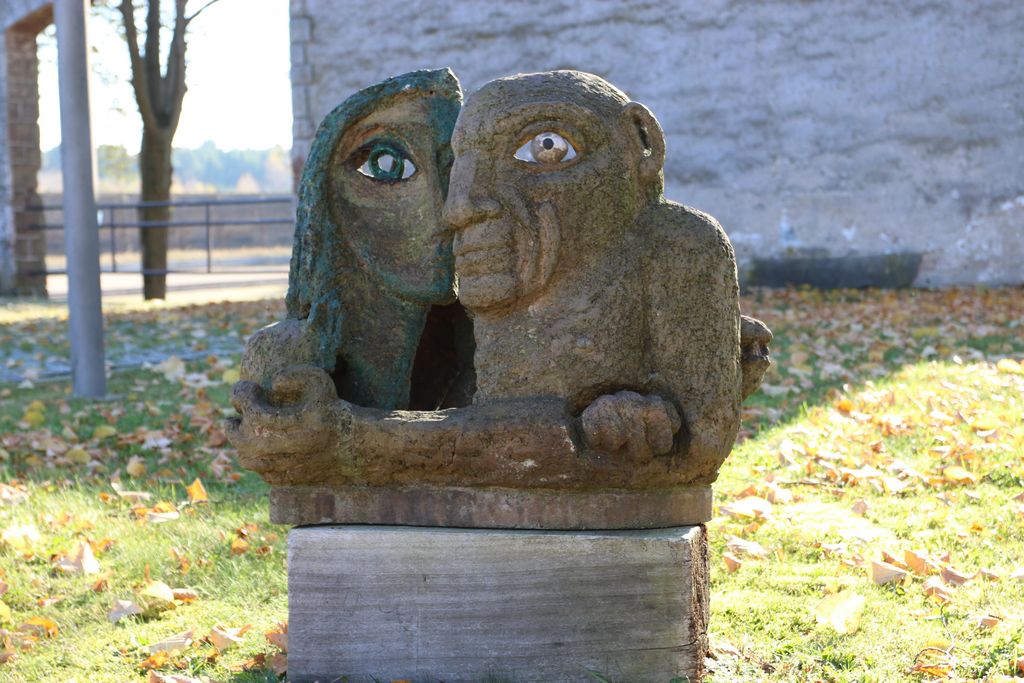Picasso – Pikaso
1974, Glazed and painted ceramic, 70 x 80 x 45 cm
Picasso is a multi-perspectival sculptural group created in 1974. The titular artist, Pablo Picasso, is manifested in two ways in the work. First, the front view of the sculpture shows Picasso in portrait format together with a female figure, who probably represents his long-time companion Françoise Gilot. The two figures are embracing and appear to be on the brink of a sensual encounter. Second, Pociłowska adopts the stylistic idiom of Picasso himself, particularly in the sculpture’s clear geometric forms and the distorted proportions of the bodies, which are most apparent in the eye area. The elliptical shapes that seem somewhat too large, with the iris and pupil clearly defined by circles, are a typical visual element in Picasso’s paintings. There are also noticeable traces of colour around the hair and eyes of the female figure. These indicate that the entire sculpture was once painted, though the colours are now only vaguely perceptible due to weathering.
The expansive details on the back of the sculpture create strong contrasts between light and dark and are thus a counterpoint to the flat, relief-like front. The eye of the female figure on the front of the sculpture becomes a sun on the back. Pociłowska’s stylistic engagement with Picasso is even more apparent here. She seems to have taken key visual elements from some of Picasso’s famous—and indeed iconic—works and translated them into three-dimensional sculpture. The ostensible disorder generated by the many different geometric forms can be resolved when one looks at the sculpture more closely. In the lower left corner there is a horse head looking to the left, an image found in Picasso’s Guernica. Two faces are also revealed, which cannot be seen in the intimate moment depicted on the front of the sculpture. The face above the horse head seems to recall LesDemoiselles d’Avignon, Picasso’s second iconic painting.
This clear reference to the stylistic idiom of an artist who was still alive when the sculpture was created is unique in Pociłowska’s oeuvre. Two key aspects are clear here: Pociłowska’s intensive engagement with contemporary art and art history, and the possibilities offered by three-dimensional objects that can be viewed from multiple perspectives.
Simon Bichler, Art History student


